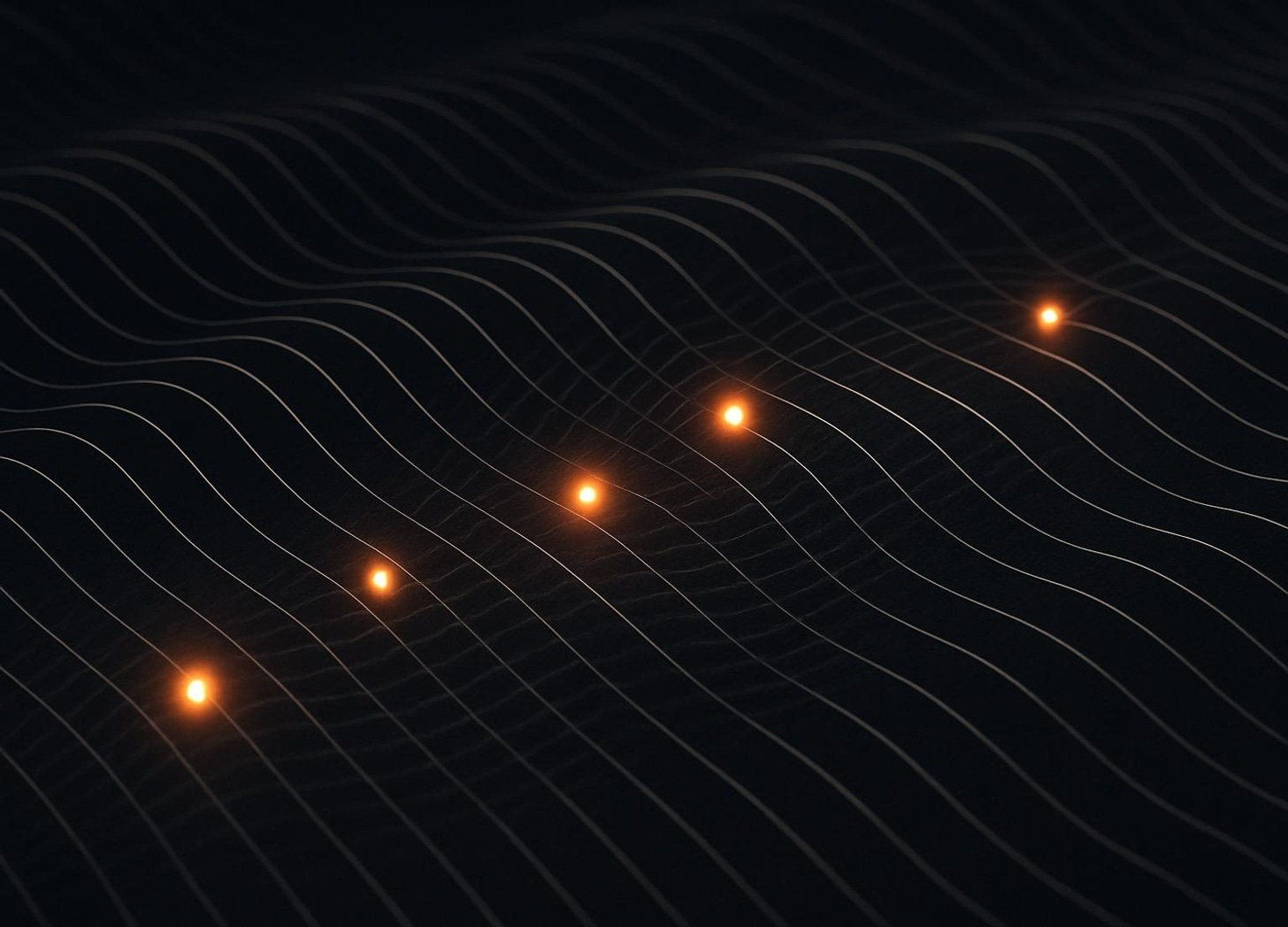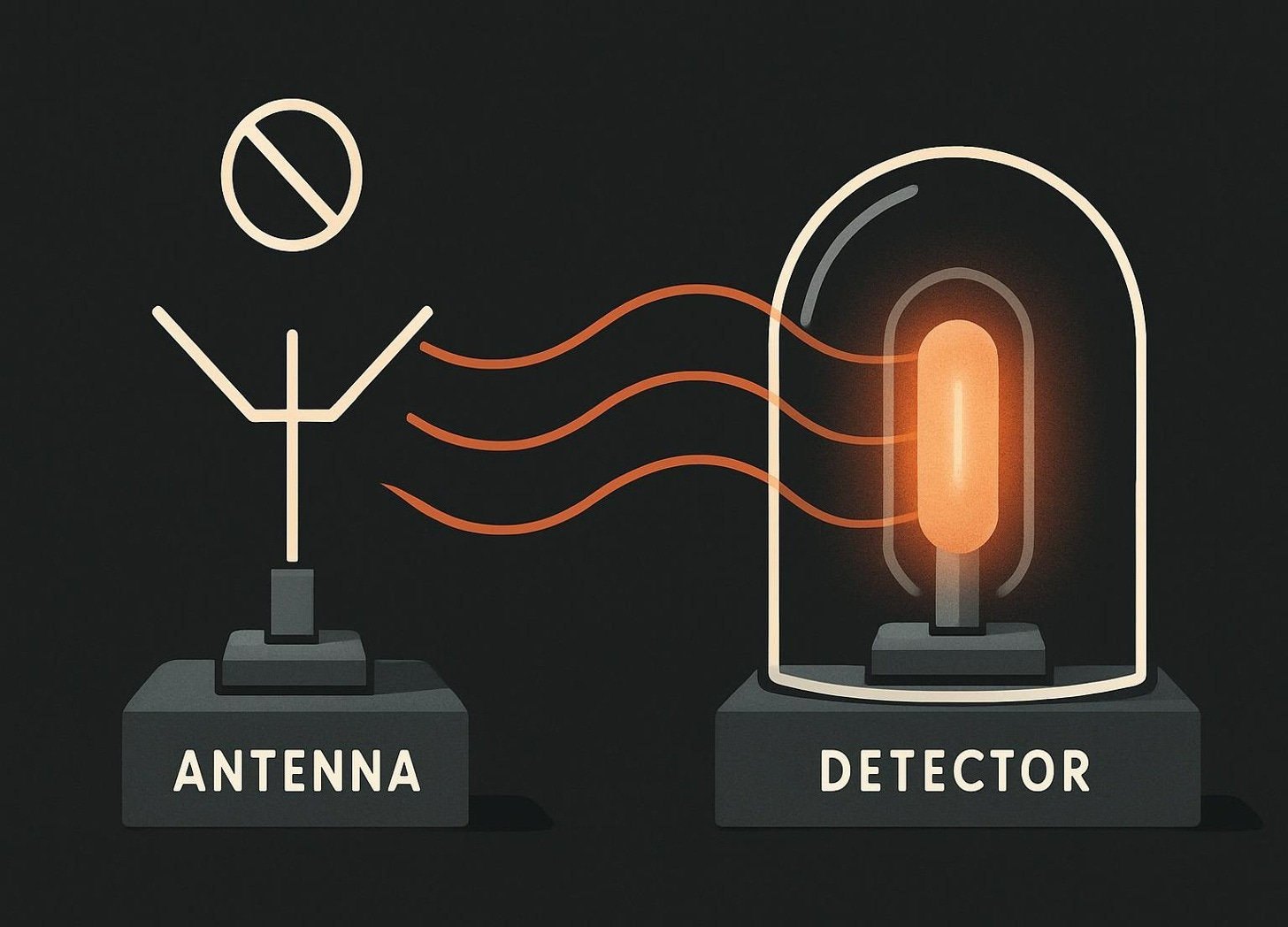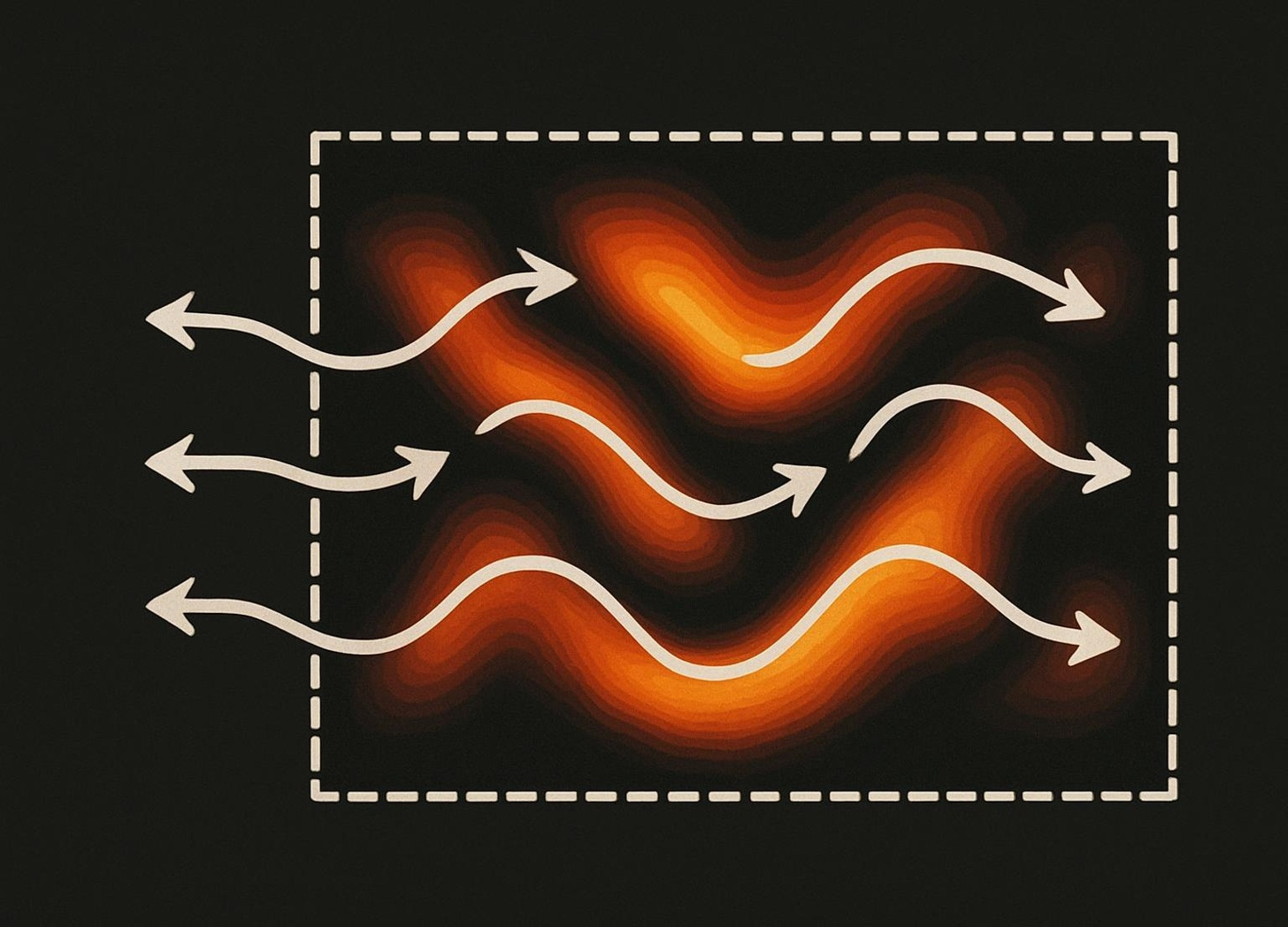Tesla’s “Non‑Hertzian” Energy
Scalar‑Longitudinal Waves, Whittaker Decomposition, and Causality Limits
⚡ In 1899, Nikola Tesla reported energy bursts that ignored distance. Can modern physics explain these mysteries?
The idea of radiant energy—energy that seems to leap across space without following familiar electromagnetic rules—still captures attention. Nikola Tesla claimed to harness this effect, sparking debate among engineers and physicists. In today’s briefing, I approach these claims through the lens of scalar longitudinal waves and nonlocal field models, using a systematic methodology.
This analysis challenges the classical view of electromagnetic propagation. It uncovers the mechanisms behind potential-based energy transfer, the role of Whittaker decomposition, and the constraints that protect causality even in models flirting with superluminal effects.
👉 Advanced Rediscovery brings you weekly briefings that cut through the noise with curated insights from my 10+ years of research in AI, extended electromagnetism, the quantum vacuum, and information theory.
In today’s briefing
🔬 Tesla’s radiant energy as scalar-longitudinal waves, not just transverse fields.
🧲 Whittaker decomposition: every EM field shows internal scalar structures.
📡 Experiments to distinguish longitudinal from transverse waves using conversion detectors.
🧠 Causality constraints: why superluminal effects don’t break physics.
🤔 Speculative hooks: what if phase-controlled scalar waves enabled energy at a distance?
Tesla’s Non-Hertzian Energy: Scalar-Longitudinal Waves and Nonlocal Electrodynamics
The radiant energy effects reported by Nikola Tesla have long puzzled scientists. These effects don’t match the familiar behavior of electromagnetic waves described by Maxwell’s equations.
I think it's about time we recast Tesla’s claims as manifestations of scalar-longitudinal waves—potential-based dynamics that coexist with, but remain hidden from, standard electromagnetic field measurements.
Tesla’s non-Hertzian energy models propose hidden scalar-longitudinal waves in the vacuum, revealed only upon interaction with charge.
In classical theory, electromagnetic fields are described as transverse waves—oscillations perpendicular to their direction of propagation. Tesla’s non-Hertzian energy challenges this view by proposing that the vacuum itself supports longitudinal (scalar) waves that carry potential energy without radiating force. These waves, according to some researchers, exist as stress patterns in the vacuum and only convert into observable force fields when they interact with matter.
The Whittaker decomposition formalizes this idea mathematically, showing that every electromagnetic field can be broken into internal pairs of scalar-longitudinal waves. These internal structures allow for phenomena like standing potential waves, phase-conjugate pairs, and scalar interferometry. Such configurations could, in theory, enable energy to be focused at a distance, bypassing the inverse-square law that governs ordinary radiation.
Some models even suggest that these scalar-longitudinal waves could produce effects that appear nonlocal or superluminal, similar to the Einstein–Podolsky–Rosen (EPR) correlations in quantum mechanics. By treating potentials as the main actors and fields as emergent, these models challenge the assumption that all electromagnetic effects are local and limited by the speed of light. While controversial, this framework offers a fresh way to interpret Tesla’s wireless energy transmission and through-earth signaling experiments.
“Potentials are the locked-in stress energies of the vacuum, capable of remote work via induced gradients.” “Transverse fields manifest only upon interaction with charge, while underlying longitudinal waves remain force-free and non-radiative.”
If these models hold, engineering the vacuum’s longitudinal stress patterns could help new forms of energy transmission emerge. The debate continues, but the implications for remote influence and wireless power are profound.
Why it matters
⚡ Tesla’s radiant energy is recast as longitudinal potential waves.
🔍 Whittaker decomposition formalizes internal scalar structures.
🧩 Nonlocal effects and phase-conjugate pairs challenge classical limits.
References [1–8]
Experimental Discrimination and Mathematical Synthesis of Longitudinal vs. Transverse Electromagnetic Waves
Discerning scalar-longitudinal waves from standard electromagnetic radiation isn’t straightforward. Conventional antennas only respond to transverse fields, so new experimental setups are needed.
Mathematically, the Whittaker decomposition reveals that every transverse electromagnetic field can be synthesized from pairs of longitudinal waves, but this process is highly sensitive to phase and amplitude control.
Conversion-based detectors and mathematical synthesis reveal the hidden structure of scalar-longitudinal waves, distinct from conventional transverse EM.
When designing experiments to distinguish longitudinal waves from transverse ones, I think we should use both standard antennas and conversion-based detectors. Standard antennas respond to the sideways push of transverse fields, while force-free longitudinal waves pass through unnoticed unless converted locally into transverse signals. These conversions often use high-field magnets inside Faraday shields or nonlinear interferometric setups, which project the hidden scalar content into detectable signals.
The Whittaker decomposition allows any transverse field pattern to be built from the interference of two oppositely directed longitudinal waves. This synthesis depends on perfect phase and amplitude matching. Even small amounts of phase noise can cause the reconstructed field to blur or lose efficiency. Envelope shaping and modal mapping add flexibility for beam profiles and polarization, but they also make the system more sensitive to drift and noise.
Experimental controls, such as propagation through lossy media or frequency sweeps, help isolate scalar effects. Local conversion is crucial; if the detector physically rotates instead of converting, the distinction is lost. Maintaining wave purity and using mechanical recoil diagnostics can further confirm the presence of scalar-longitudinal components.
“Standard antennas detect only transverse EM by measuring lateral electron precession, while force-free longitudinal potential waves require engineered conversion regions to become observable.” “Precise phase locking and amplitude control across the harmonic ladder are essential for accurate synthesis; phase noise introduces modal impurities, reduces efficiency, and blurs spatial features.”
These experimental and mathematical approaches offer a roadmap for uncovering hidden layers in electromagnetic fields. If successful, they could help new communication technologies and energy transfer methods emerge.
Why it matters
🔬 Standard antennas miss scalar-longitudinal waves.
🧲 Whittaker synthesis needs precise phase control.
📡 Conversion-based detectors reveal hidden wave content.
References [1–5, 8–16]
Causality and Synchronization in Potential-Based Electromagnetic Models
If electromagnetic potentials can change almost instantly across a region, does this threaten causality? The answer lies in the rules of microcausality and gauge invariance.
Practical systems must synchronize signals and fields without violating the speed-of-light limit, relying on coherence control and careful boundary management.
Even in potential-based electromagnetic models, causality and gauge invariance prevent faster-than-light signaling.
Despite appearances, electromagnetic theory enforces causality at every step. Microcausality in quantum field theory ensures that no operation can send information faster than light. Even if a potential seems to update instantly, only gauge-invariant combinations—those with physical meaning—can affect measurements.
Synchronization in practice comes from coherence management and respecting boundary conditions. For example, lasers and cavities use phase-locked signals, but all changes still propagate at or below light speed. Local-update models, like cellular automata, physically restrict updates to nearby points, keeping information flow within the light cone.
Gauge freedom allows for mathematical flexibility, but constrained Hamiltonian formalisms guarantee that only observable, causally consistent variables matter. The Aharonov–Bohm effect shows that potentials can have real effects, but only through closed loops that can’t be used for superluminal signaling. Even rapid boundary reconfigurations must filter through the permitted causal channels.
“Microcausality in relativistic quantum field theory ensures that no measurable operation can transmit information faster than light, even if potentials appear to change rapidly.” “Gauge invariance means that many potential changes are physically empty; only gauge-invariant quantities (fields or phase differences) can have observable effects.”
Potential-based models can look strange, but causality and gauge invariance keep the universe’s speed limit intact. Any future technology must still play by these rules.
Why it matters
🧠 Microcausality blocks superluminal signaling.
🔬 Gauge invariance enforces physical constraints.
🧭 Synchronization relies on light-speed-limited mechanisms.
References [17–21]
Final Thoughts
Tesla’s non-Hertzian energy concept shows a provocative split in how electromagnetic fields might be structured. Classical theory focuses on transverse fields, but scalar-longitudinal models introduce internal layers, where potentials take the lead and fields emerge only through interaction with matter. In my research, these hidden structures could enable energy transfer unconstrained by inverse-square laws or locality.
Hypotheses about nonlocal or superluminal effects remain controversial, but they spur valuable questions. Could phase-controlled scalar potentials allow remote energy deposition? Might experiments using advanced detectors finally reveal the vacuum’s hidden structure? For now, causality stands firm, enforced by gauge invariance and boundary conditions. The tension between potential-based and field-based models keeps the debate alive and the questions coming.
Quick Recap
🧠 Tesla’s radiant energy models propose hidden scalar-longitudinal waves.
🔬 Whittaker decomposition shows every EM field has internal scalar structures.
📡 Experiments can distinguish longitudinal from transverse waves.
🤔 Causality and gauge invariance constrain superluminal effects.
👉 Each week you’ll receive one email with ideas, digital material, and tips from my lab. As a PhD engineer, I’ve built the mindset to decode and build upon intricate systems and theories — and I’ll help you do the same.
🧠 Question everything. Debate these hidden layers of electromagnetics with your peers and test the boundaries of what’s possible!
🧑🏼 Follow @drxwilhelm on X Twitter, Substack, Medium, TikTok, YouTube
Glossary
Radiant Energy: A form of energy described by Nikola Tesla, often linked to non-Hertzian or scalar-longitudinal waves, distinct from conventional electromagnetic radiation.
Scalar-Longitudinal Wave: A hypothetical wave component in electromagnetics where oscillations occur in the direction of propagation, unlike the transverse nature of standard electromagnetic waves.
Whittaker Decomposition: A mathematical method that breaks any electromagnetic field into internal scalar-longitudinal wave pairs, underlying the observed transverse fields.
Gauge Invariance: A principle stating that only certain combinations of potentials and fields have physical meaning, ensuring that observable effects are independent of arbitrary mathematical choices.
Nonlocality: A property where an effect at one point in space appears to be connected to another distant point without a mediating signal traveling through the intervening space.
Inverse-Square Law: A rule stating that the strength of a physical effect, such as electromagnetic radiation, decreases in proportion to the square of the distance from its source.
Aharonov–Bohm Effect: A quantum phenomenon where electromagnetic potentials affect particle behavior even when fields are absent, highlighting the physical significance of potentials.
Microcausality: A constraint in quantum field theory that ensures no information or influence can travel faster than light, preserving causality.
Phase-Conjugate Pair: Two waves with reversed phase relationships, allowing the reconstruction or focusing of energy at a distance, often discussed in scalar interferometry.
Scalar Interferometry: An experimental technique aiming to manipulate and detect scalar-longitudinal waves, often proposed for remote energy transfer or field manipulation.
Sources & References
Bearden TE. Background for Pursuing Scalar Electromagnetics. 1992.
Bearden TE. Towards a New Electromagnetics – Part 4 – Vectors and Mechanisms Clarified. 1983.
Bearden TE. Excalibur Briefing – Explaining Paranormal Phenomena. 1988.
Bearden TE. Gravitobiology – A New Biophysics. 1991.
Bearden TE. Oblivion – America on the Brink. 2005.
Forbes A. Free Energy Friday – Extracting Energy from the Vacuum [video]. YouTube.
Nichelson O. Tesla’s Fuelless Generator and Wireless Power Transmission. 2004.
Bearden TE. Star Wars Now – The Bohm–Aharonov Effect, Scalar Interferometry and Soviet Weaponization. 1984.
Bearden TE. Annotated Glossary. 2000.
Bearden TE. Engineering the Active Vacuum – On the Asymmetrical Aharonov–Bohm Effect and Magnetic Vector Potential A vs. Magnetic Field B. 2006.
Bearden TE. Giant Negentropy From the Common Dipole. 2000.
Bearden TE. Extracting and Using Electromagnetic Energy from the Active Vacuum. 2001.
Moore K; Stockton M; Bearden TE. Electromagnetic Energy from the Vacuum – System Efficiency (ε) and Coefficient of Performance (COP) of Symmetric and Asymmetric Maxwellian Systems. 2006.
Bearden TE. The Motionless Electromagnetic Generator – Extracting Energy from a Permanent Magnet with Energy-Replenishing from the Active Vacuum. 2018.
Bearden TE. The Final Secret of Free Energy. 1993.
Bearden TE. Progress Report on the Sweet Vacuum Triode. 1992.
‘t Hooft G. The Cellular Automaton Interpretation of Quantum Mechanics. 2016.
Dubois DM. Anticipatory Effects in Relativistic Electromagnetism. 2001.
Dubovik VM; Shabanov SV. The Gauge Invariance, Toroid Order Parameters and Radiation in Electromagnetic Theory. 1993.
Barrett TW. Maxwell’s Theory Extended – Part 2 – Theoretical and Pragmatic Reasons for Questioning the Completeness of Maxwell’s Theory. 1990.
Barrett TW. Maxwell’s Theory Extended – Part 1 – Theoretical and Pragmatic Reasons for Questioning the Completeness of Maxwell’s Theory. 1990.






"Microcausality: A constraint in quantum field theory that ensures no information or influence can travel faster than light, preserving causality."
We have to be careful what we measure or what we assume we must measure predicated on what we assume is the path of traversal may not be the path of traversal after all.
One example of this is when Eric Dollard talks about how lightning forms: where did it get its energy to build up its potential? It does not get it from a cloud or from the earth. It gets it from the surrounding space at right angles to the pathway of the subsequent lightning bolt being sucked in at right angles to charge up what will become a greater and greater voltage difference leading to breakdown of the air and a subsequent lightning strike.
Like this, when I found out under simulation that current can be offset from voltage by half a cycle of oscillation, and these waves cannot be fully graphed (only their peaks and troughs can be plotted), their formation does not proceed across the circuit in a sequential manner as a transverse wave would move. Instead, these pseudo waves manifest everywhere (throughout the circuit), simultaneously, or else they will not form at all. This requires synchronicity among all of the participating components. And this also requires an extreme condition of input starvation.
It could be postulated that an elevated input (what convention assumes to be required to satisfy a load) presupposes a ripe opportunity for wave displacement (due to a lagging or a leading phase difference) while a depleted input suggests a greater opportunity for spatial synchronicity among components and temporal half -cycle synchronicity between phases.
"These waves, according to some researchers, exist as stress patterns in the vacuum and only convert into observable force fields when they interact with matter."
I agree. When considered separately from the existence of matter, space is a singularity. It is already a singularity. It does not have to collapse or go through any kind of weirdness to become a singularity. All we have to do is consider it distinctly separate from the matter within it and it immediately loses all of its shape if it had any because it no longer has boundaries and it loses distance within itself because distance is only obvious when there is matter to create that distance. So, as a singularity, the rules of the transmission of energy don't apply when space is considered without any of its matter. And being that a vacuum is a dielectric medium capable of the formation of capacitance, it's already simple logic to deduce that space can store all sorts of potentials that we don't know about until they become liberated by the presence of two or more points of matter operating as capacitor plates to give polarity and release for the potential stored within so-called empty space. I do believe and suspect that matter has always existed and there never was a time when matter did not exist (coexist) with empty space. But it is important to us as thoughtful individuals to consider space by itself in order to properly analyze its characteristics. We're so busy analyzing it interacting with matter that we forget that space can be considered all by itself without matter and without energy in order to get a different view of it then the conventional view that is for the most part operational in its character as you suggest. But to suppose that matter or energy could exist without space of course is not possible. So it shows that space is "a priori" over matter and not the other way around.